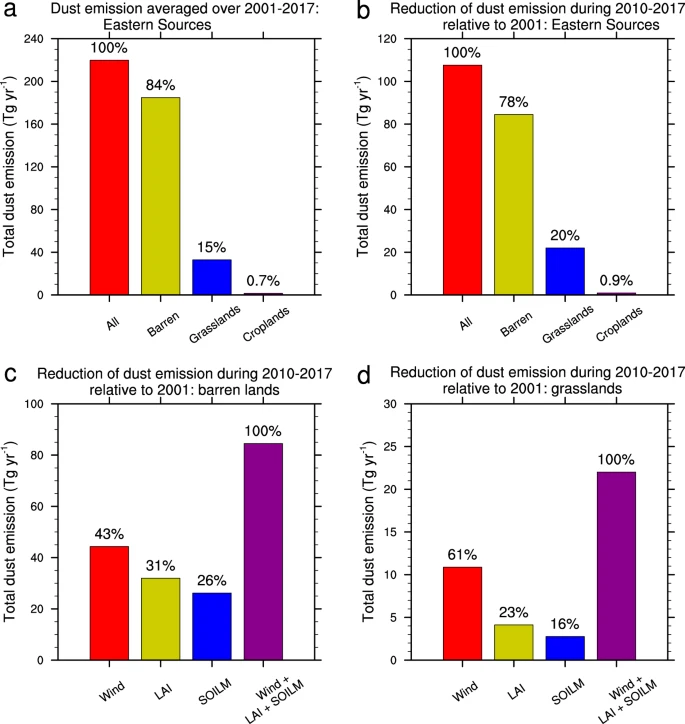Phys.org December 21, 2022
Dust entrained into the atmosphere serves as a major aerosol type, exerting effects on weather and climate system via aerosol-radiation-cloud interactions and delivering nutrients from continents to other continents and oceans. Using a physically-based dust emission model, an international team of researchers (China, Germany, USA – Texas A&M University) has shown that the weakening of surface wind and the increasing of vegetation cover and soil moisture have all contributed to the decline in dust activity during 2001 to 2017. The relative contributions of these three factors to the dust emission reduction during 2010–2017 relative to 2001 are 46%, 30%, and 24%, respectively. Much (78%) of the dust emission reduction is from barren lands, and a small fraction (4.6%) of the reduction is attributed to grassland vegetation increase that is partly ascribed to the ecological restoration. According to the researchers this suggests that the ecological restoration plays a minor role in the decline of dust activity. Rather, the decline is mainly driven by climatic factors, with the weakening of surface wind playing the dominant role. And they suggest that all these relevant factors must be considered for projecting future dust change in this region…read more. Open Access TECHNICAL ARTICLE

Dust emission and its change over different land cover types. Credit: Nature Communications volume 13, Article number: 7105 (2022)